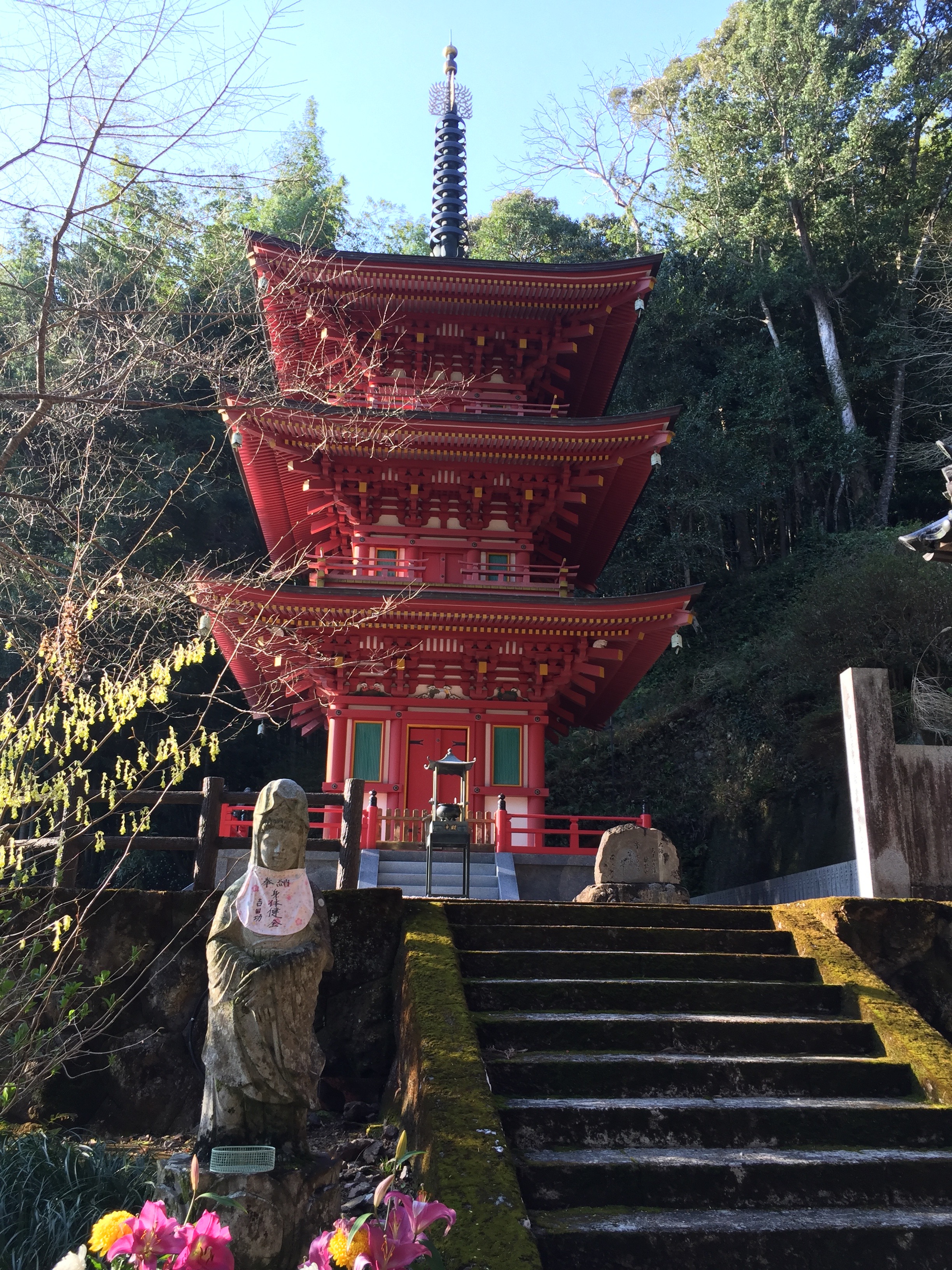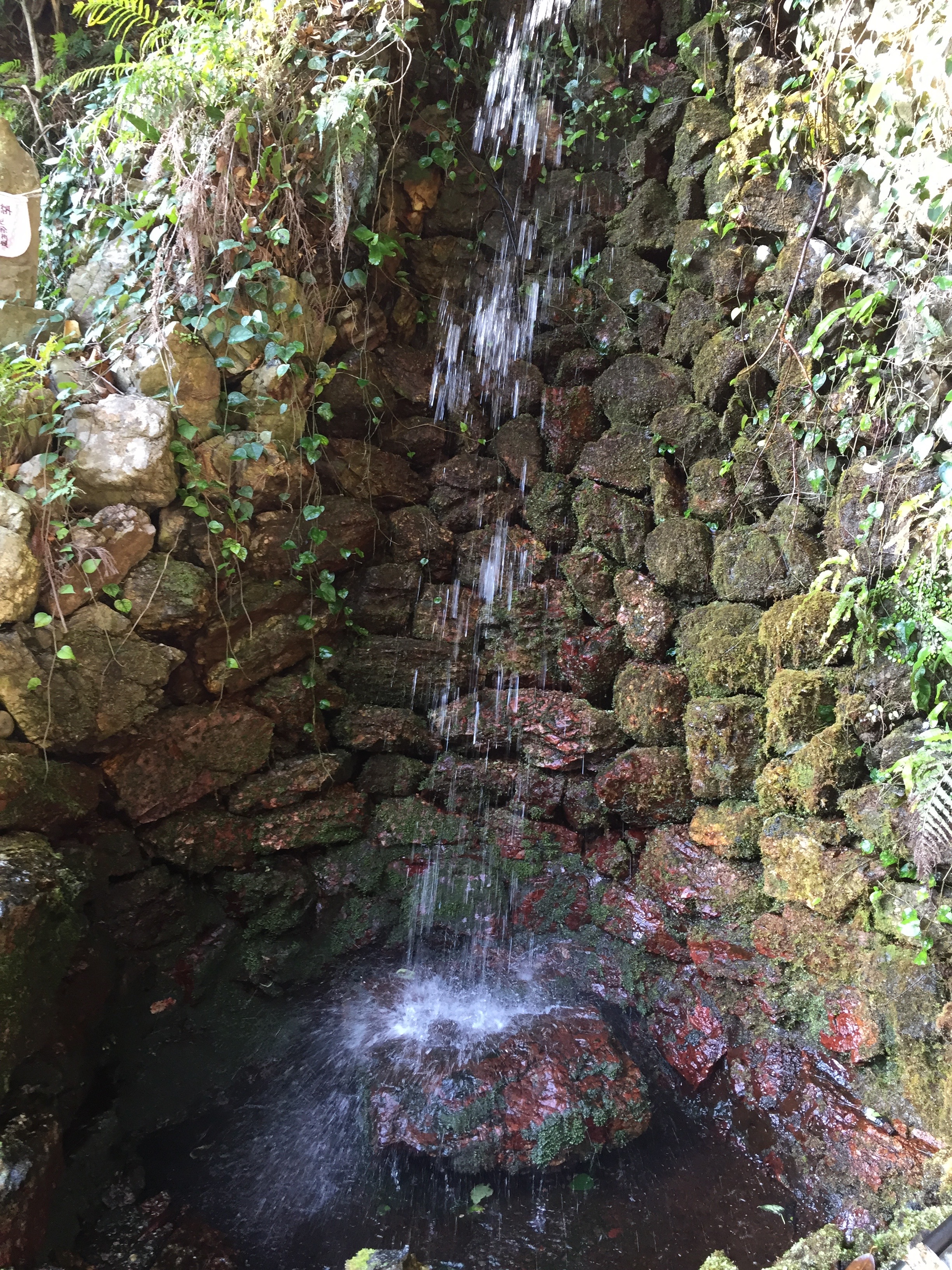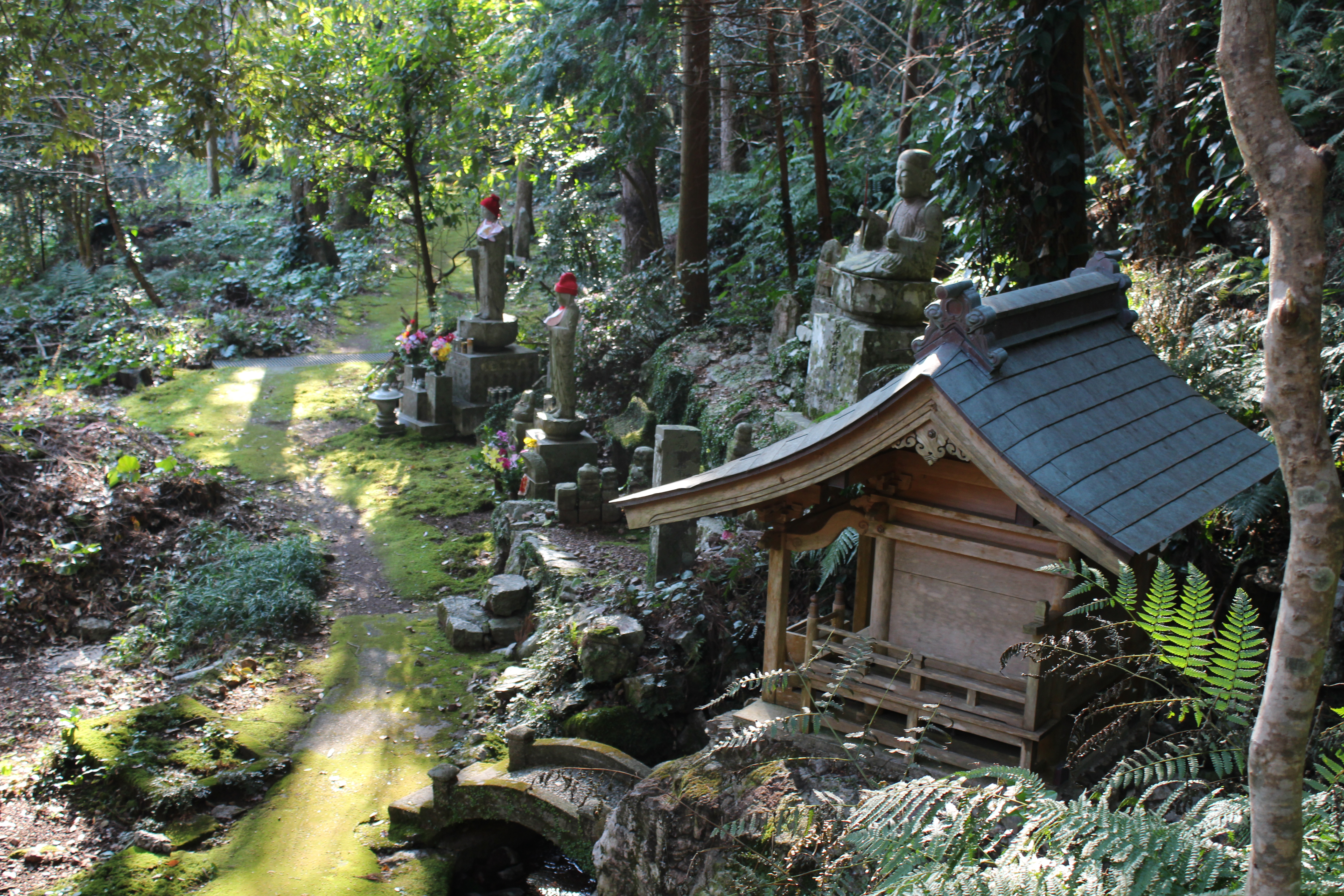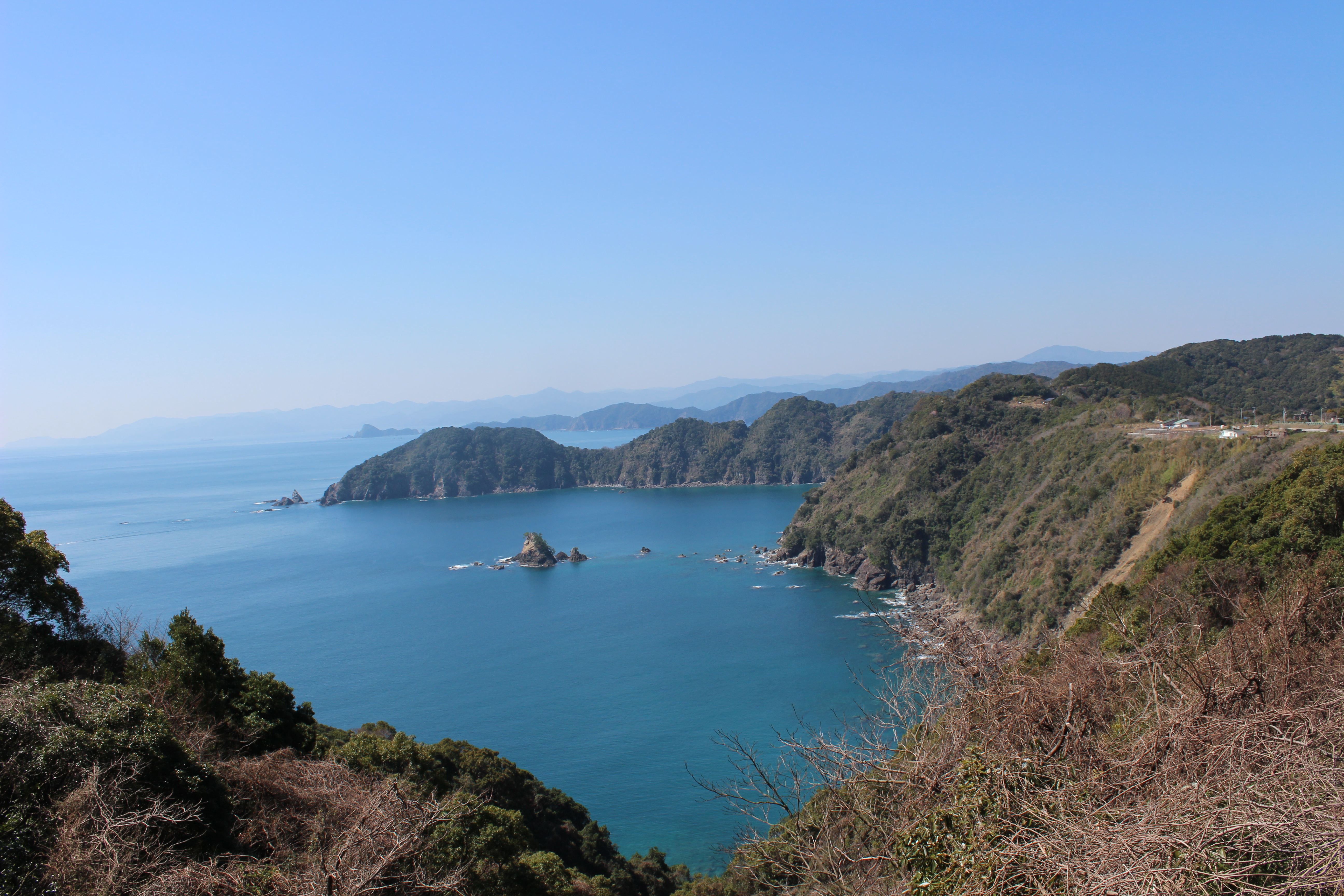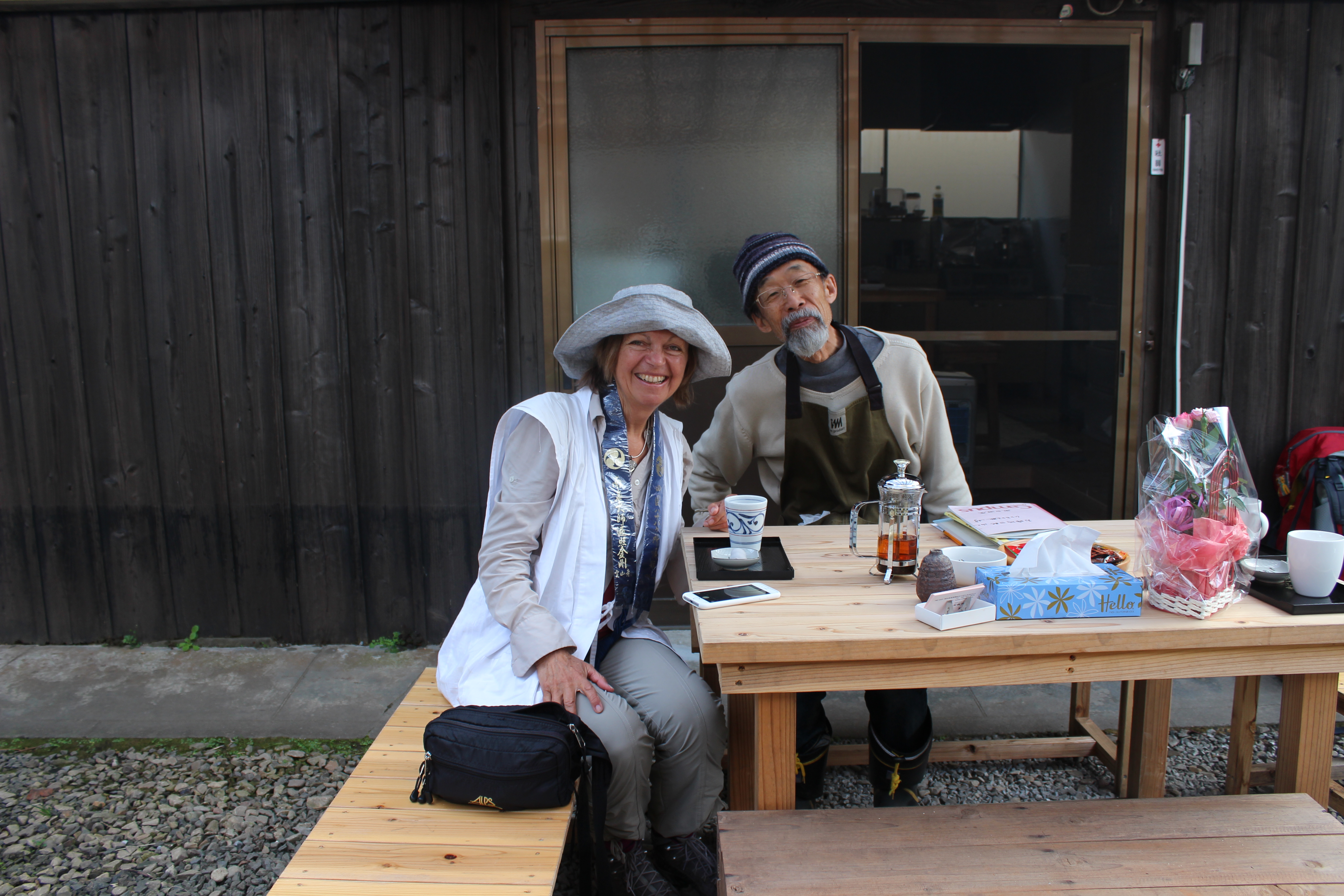Beauty everywhere (temples 36,37)
There were many moments during my pilgrimage where I was thinking that it could not become more beautiful – that this moment was the pivotal point, unsurpassable – and yet, beauty appeared over and over in many different facets.
The beauty around Shōryūji, temple 36, the temple of the blue dragon, started with a spectacular sunrise observed from my window.
Sunrise from my hotel, Kokumin-shukusha-Tosa
The owner of the hotel I stayed in was a lover of European art. Not only did he build a hotel in the style of houses in Santorini, a Greek Island, he also owned two pets, which hobbled around freely in the hotel lobby. One was a weasel and the other one a rabbit. He told me that both were connected with famous art pieces. (Leonardo da Vinci ‘s “Woman with the Weasel” and Albrecht Dürer’s famous “Rabbit”)
The owner of hotel Santorini on the terrace
In early morning, I visited Shōryūji at the foot of the cliff. The three-story pagoda lit by the morning sun started to glow like the sun itself.
Pagoda with the statue of Kannon, the Goddess of Compassion, on the left
Attached to the shrub beside Kannon were Omikuji, little fortune slips. It looked like a Christmas tree.
Sometimes in temples there are waterfalls with a stepping-stone on the ground for spiritual training. Ascetics used them to clean themselves from impurity. People even nowadays do this training to clean body and mind.
Moss covered path near the main temple halls
After leaving the hotel, the view to the Pacific Ocean was stunning.
Seeing these rocks in the calm ocean, I could imagine that scenes like that inspired the Zen rock gardens.
Less beautiful but practical were all the vending machines along the pilgrimage way. One could not only buy cold drinks but also hot ones– especially many different kinds of coffee drinks. I liked a bottle with a brown liquid in it called houjicha, which was roasted tea without sugar. Most of the drinks were too sweet for me.
.
As much as I could, I tried not to walk through the famous, long tunnels typical for the Shikoku pilgrimage. Cars and trucks passed very close and the noise was almost unbearable. Sometimes, there was no way around
All along the Shikoki-no-michi, Path of Shikoku, the community provided rest stations for the Ohenros. The photo above shows one of these resting places.
Before arriving at Iwamotoji (temple 37), where I stayed overnight, I was invited for tea and Daifuku–mochi (rice cake with bean paste inside, lit. Great Luck Mochi) as Osettai. Wecome-reception (traditionally practiced by people living along the Ohenro-michi, used almost like Omotenashi, more widely used, and has become popular world-wide), by a very kind Japanese man.



